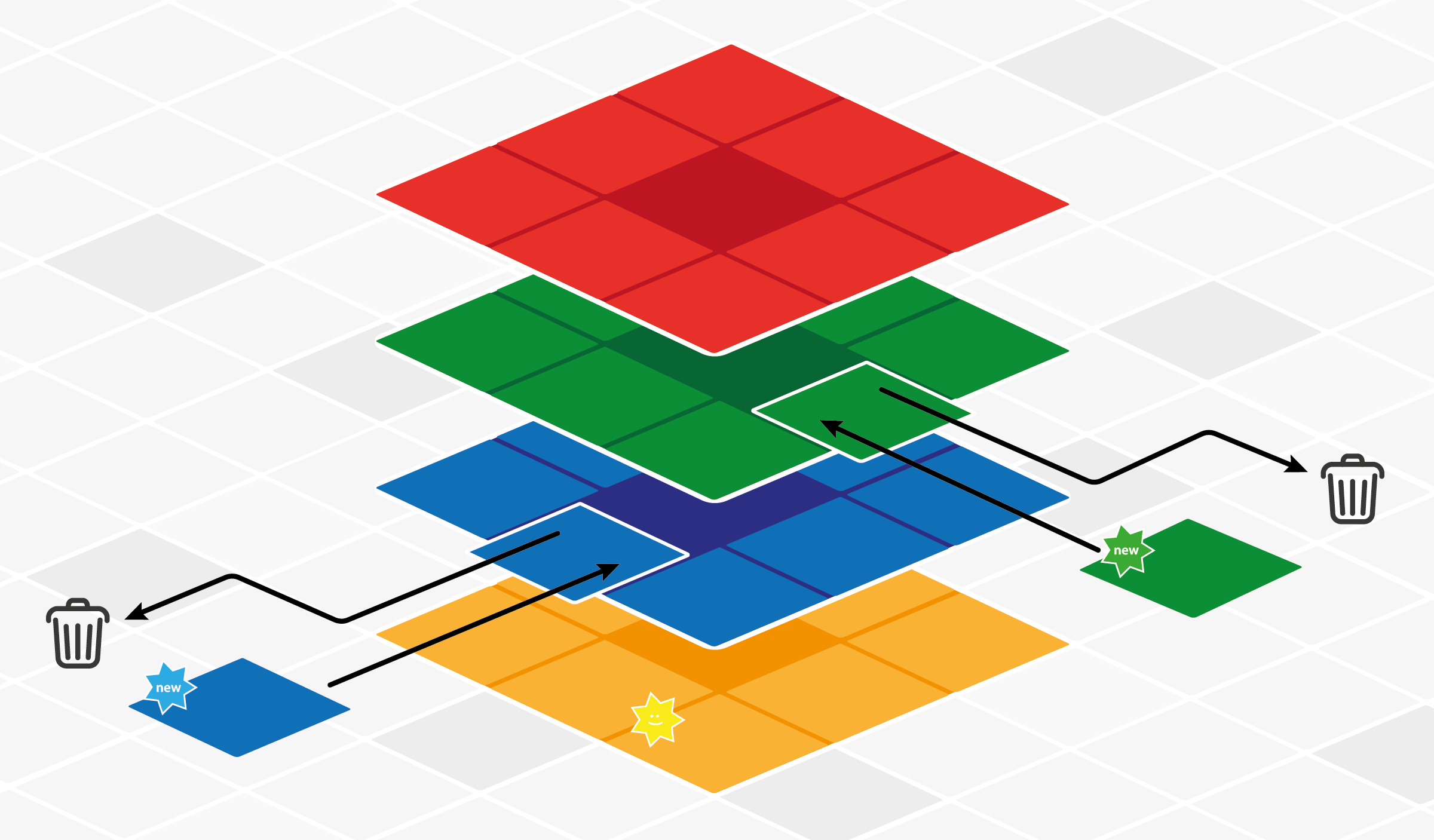Design course development
When
2021Client
UNSW Faculty of EngineeringTeam
- Prof Ilpo Koskinen
- Nick Gilmore
- Doménique van Gennip
- (various executive assistants)
In 2019, I joined UNSW Design Next, a cross-faculty initiative aiming to develop design research and teaching across the university. Within that broader strategic plan, our strongest focus was on building a coherent strand of design-focused courses in the Faculty of Engineering.
In a period of two years, our unit of four people developed and managed three large-scale and complex courses. In 2021 alone, we brought together 3100+ students with 150+ academic staff.
This was challenging because:
- At 1500 students per year, the courses would be very large;
- Replacing existing courses required Schools in the faculty to adjust their program structure;
- We needed to negotiate with individual Schools’ to match their projects with our common parts, and;
- The proposed 3rd year course would run across faculties, adding another layer of complexity.
Strategic plan for design courses
For years, the Faculty of Engineering had one common course for all of its students in the first year (ENGG1000). Now, it was looking to develop a clear design thread into the more discipline-heavy second and third years. This represented a system-level change to its engineering design education.
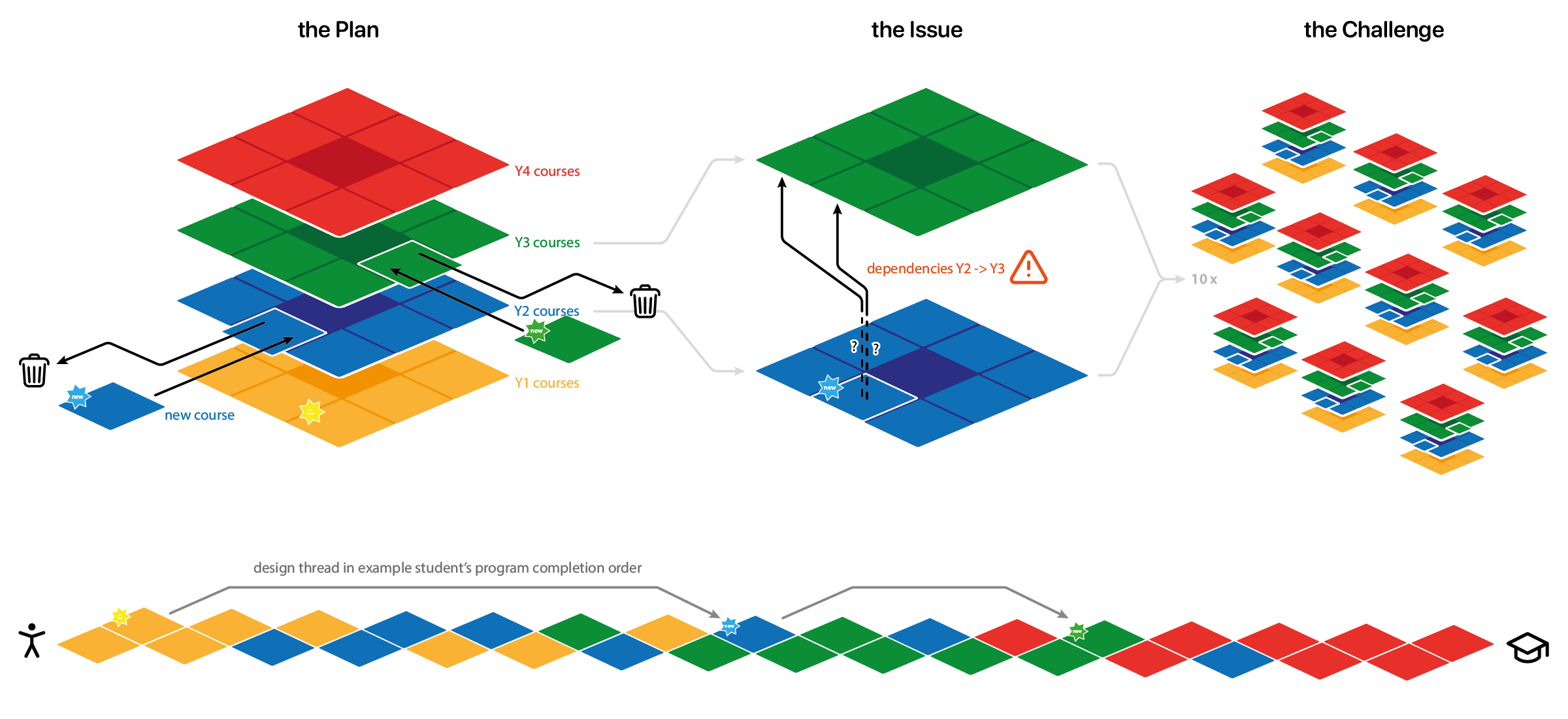
I had a lead role in developing, coordinating, and co-teaching these courses, which focused on engineering design (1st year), user-centred design (2nd year), and strategic design innovation (3rd year). All of this required considerable project management acumen and interpersonal skills to engage a broad range of stakeholders (from students to academics to admin staff to faculty Deans). On reflection, in some ways, we were product managers for these courses more than we were lecturers. We maintained a clear focus on improving the student experience, not just for these courses but over their entire degree, and framed our efforts in service of that goal.
Below, I mostly focus on our 2nd year DESN2000 course as I was the primary coordinator for this course after its inaugural run.
Moving from strategic plan to implementation
By late 2019, there was a high-level model for the new second year course, named DESN2000: we would teach a common component worth 40% and each School would be responsible for 60%. Because we opted for a project-based course to tie it all together, integrating the two parts would be vital to ensure a good and consistent learning experience for all 1500 students who’d be taking this core course every year.
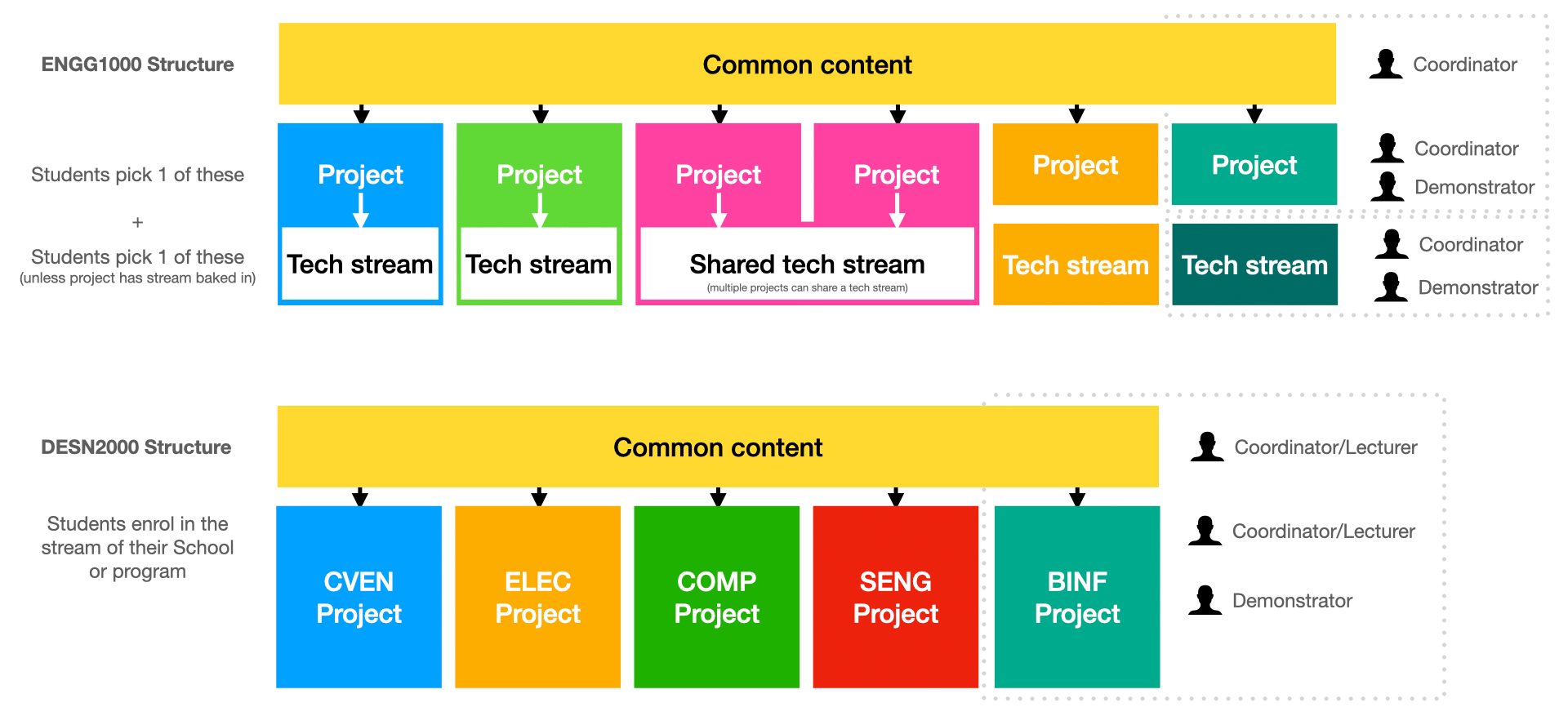
We accomplished this by tackling the challenge in two parts: first, we reached early agreement with all Schools on broad principles in teaching focus. That provided the tactical framework for all of us to work in.
Second, we developed a co-teaching approach. Our small team collaborated with a broad range of teaching staff and their (Deputy) Heads of School across academic disciplines to understand their technical material.
The various disciplines varied wildly in the kind of courses we were to replace: for example, we had to find some common ground amid embedded systems design, agile mobile app development practices, and a Human Factors approach to designing a tram stop. Their historical methods of teaching were also very different, so much negotiation was involved in finding a happy medium.
The primary vehicle for teaching everything is the project. Therefore, project briefs had to be open-ended enough to allow students to explore design possibilities whilst ensuring they could reach enough discipline-specific depth. Crafting these project briefs together with stream coordinators was time-intensive but very valuable.
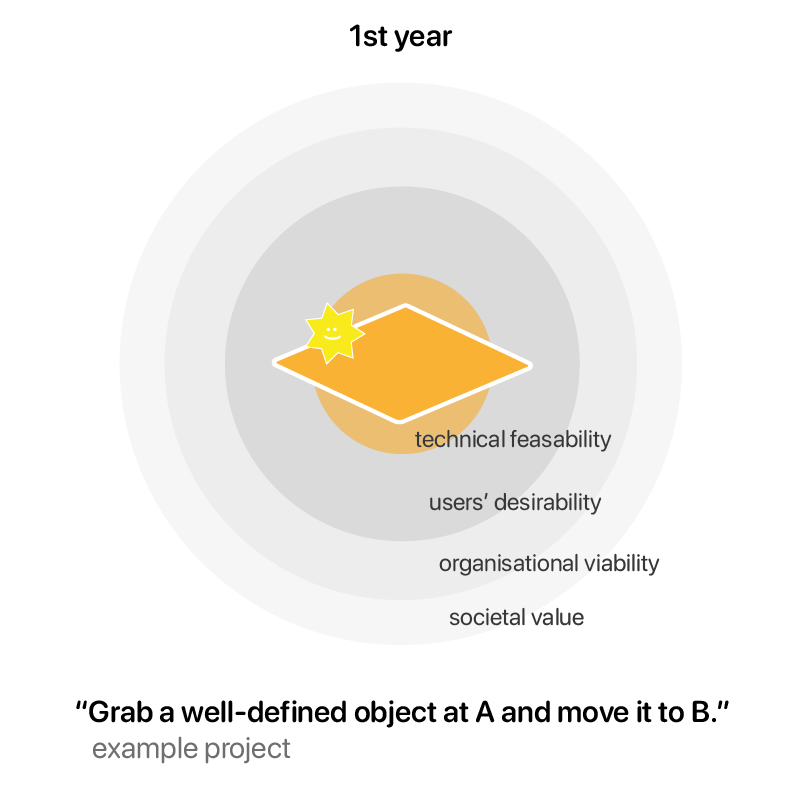
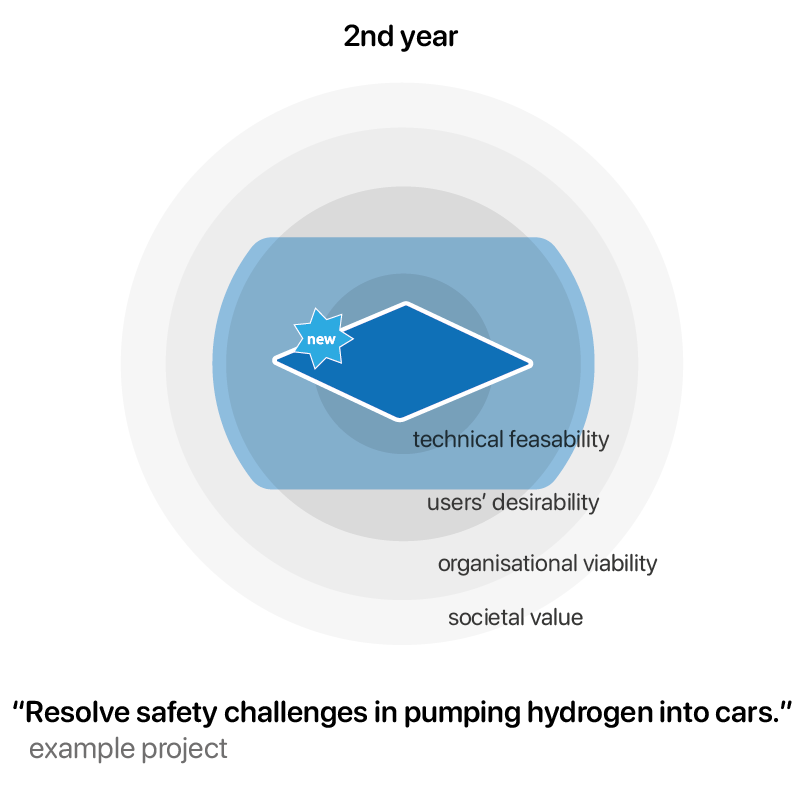
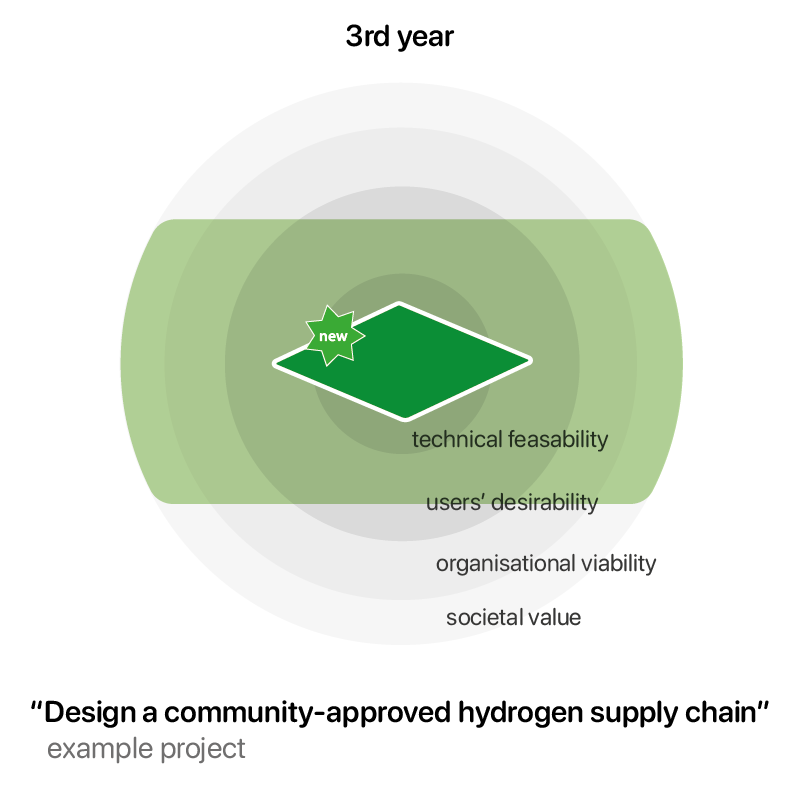
Delivery and project management
Our project management of DESN2000, like our other courses, evolved around the development of one spreadsheet that we jokingly dubbed ‘the Mothership 🛸.’ It held schedules, staff info, project summaries, assessment structures, a detailed timeline for delivery milestones, etc. This approach simplified information access for our co-teachers, was the basis for ongoing process improvements, and ultimately made adopting common approaches among the group as easy as possible.
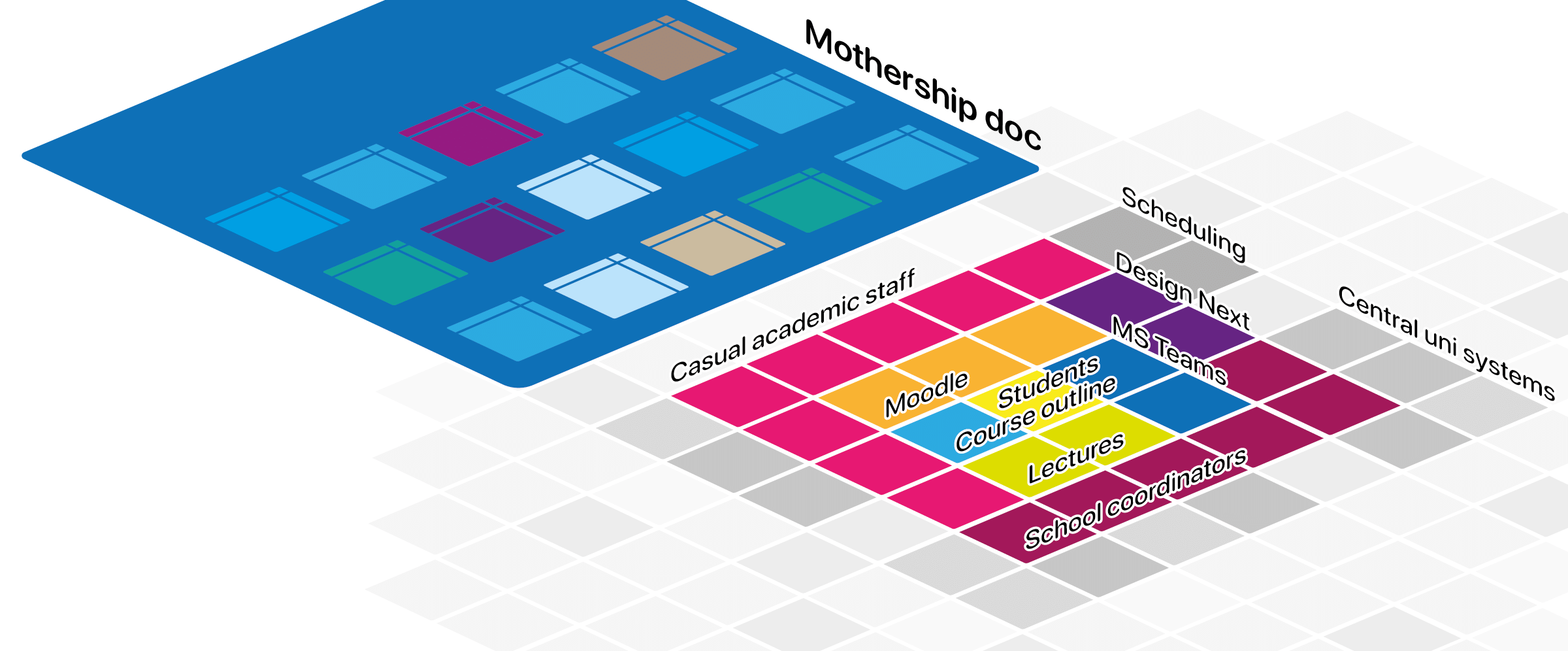
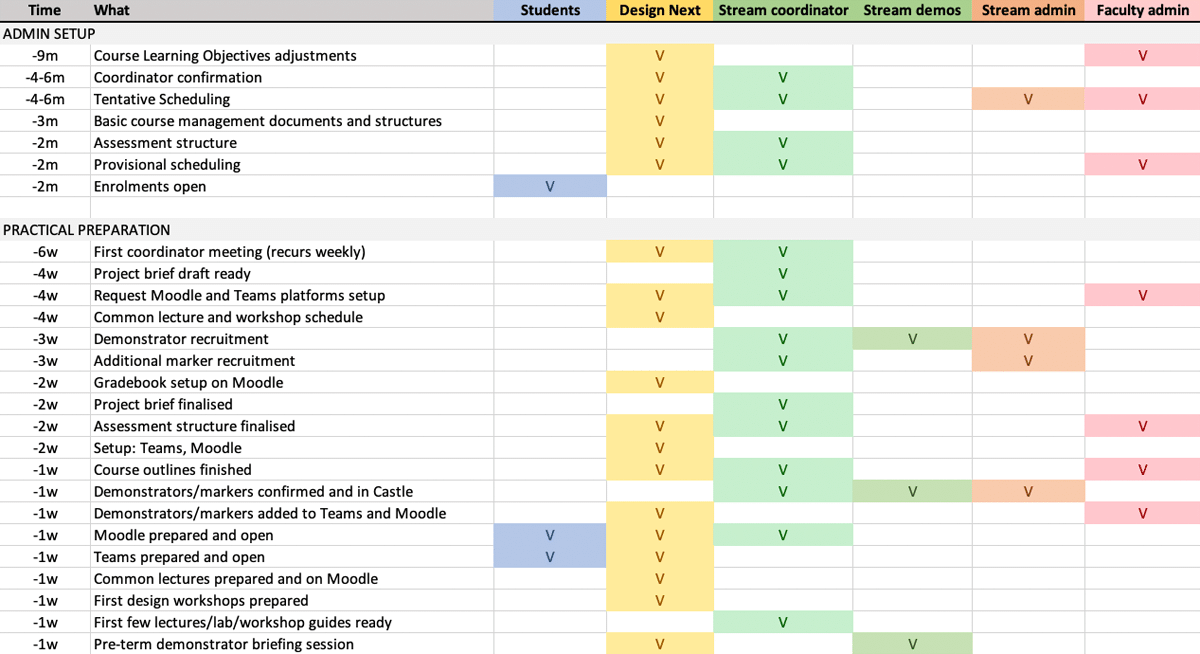
In its first year, within our unit we had a truly collaborative approach to developing materials, managing teaching admin tasks, and running coordinator meetings. We realised that strategic and tactical matters were relevant to all of us, but operational details were best distributed to one person per course. I also sought to automate some of the repetitive tasks involved.
The unfolding pandemic complicated our delivery but we quickly adopted online platforms for teaching, including MS Teams and Zoom, and made the most of lecture livestreams. This allowed us and co-teaching academics to focus on doing our best work teaching design skills.
Refinement after the first year
By its second year, our approach to DESN2000 had developed in four significant ways:
- It was no longer our only course: Engineering’s first-year design course,
ENGG1000, one of the largest courses at UNSW and certainly its most complex course, was now under our stewardship. This brought much useful insight and additional workload. - Four more programs would join the course, bringing the number of streams to ten and expected student numbers up to 1500 per year.
- More so than in our first year, we needed to be systemic in our delivery to ensure efficiency and quality.
- Its focus would move closer to user-centred design, giving it a distinct focus in our design thread.
Student experience improvements
Our systemic approach paid off quickly. For ENGG1000, recent student satisfaction was 87%, up from 67% two years prior. In part, I believe, this improvement came about because we reduced inconsistencies and had clearer communication throughout.
For DESN2000, student perspectives proved it was still a work-in-progress, with wild swings in satisfaction depending on the stream (ranging between 50-82%). It was clear that late changes or really anything that threatened the tight integration of common and stream-specific parts caused student experience to nosedive. So while that’s clearly the most challenging, time-consuming aspect of convening this course, it’s also vital to its success.
Strategic development of 3rd year course
Moving back to the strategic level, our 3rd year course DESN3000 was still in its infancy in early 2020. This meant we had a larger influence on the shaping process.
By mid 2020, DESN3000 development moved to a committee model because of senior stakeholders’ desire to first see broad agreement on the direction of a cross-faculty course. During this committee process, we initially laid back and listened. Gradually, we introduced proposals to the group to stimulate further debate.
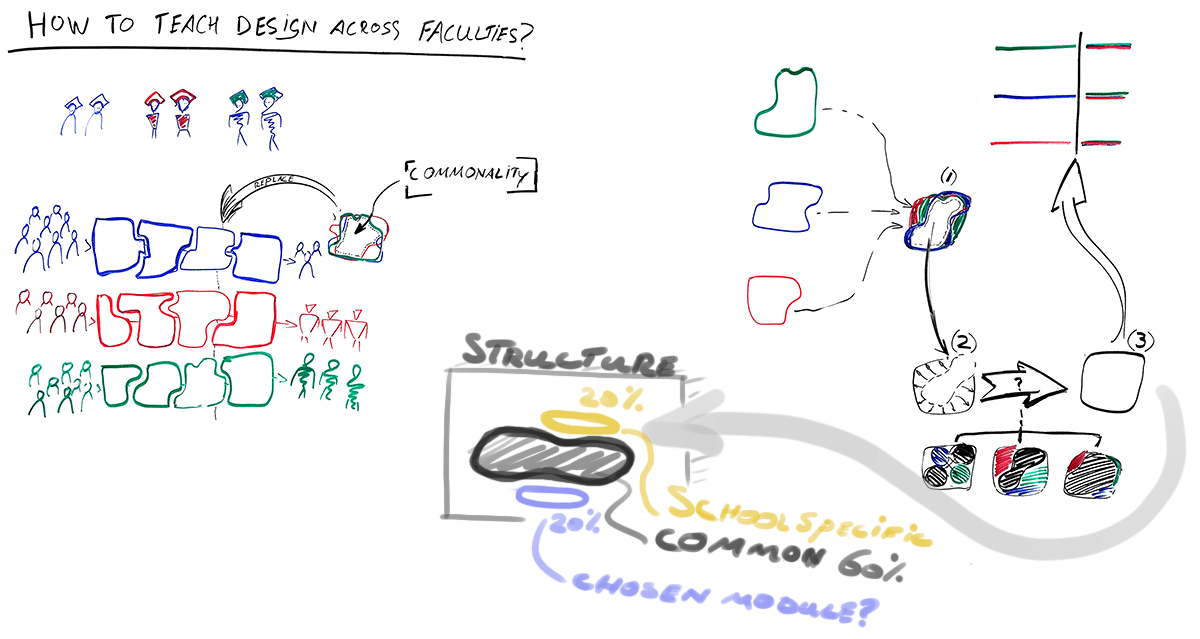
The key discussion revolved around whether this course should be a generic design skills course, or should allow for significant discipline-specific engineering depth. Most courses earmarked for replacement were of the latter kind, but the decision fell towards the former. As a result, Schools retained their technical design courses and instead flagged professional practice and ethics courses. With that decision, it became easier to envision the future course around strategic design innovation, taking into account ethical considerations and (engineering) practice.
By mid 2021, we took over Mechanical Engineering’s MMAN3000 course as a pilot to build up towards its conversion into DESN3000 from 2022 onward. In its 2021 run, with 450 students, we adapted the structure to test a few of the teaching innovations that we considered. This gave valuable insight and helped us gain confidence ahead of a bigger, more complete overhaul the next year.
